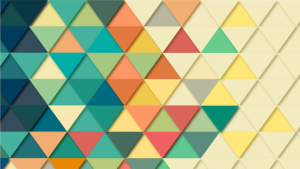
What is Visual Communication Design?
‘Visual Communication Design’ or ‘Graphic Design’ is the creative art, career and academic field whose main activity is in creating visual communications meant to transmit certain messages to specific social groups, for specific purposes. Graphic Designers is generally categorized as Art Graphic, Logograph, or Media Graphic Designers. Their work is usually displayed in print, on television, in magazines and newspapers, and on websites. The most common graphic design themes are typography, images, video, illustrations, and layouts.
There are various types of graphic design such as Typography which mainly deals with typesetting and utilizing fonts and text. Fonts used are normally selected keeping in mind the overall meaning of the message that is intended to be conveyed. For example, in a newspaper column, the typeface needs to be such that it conveys the meaning of the matter in a clear and easily readable manner. In other words, the message should be made plain and easy to comprehend.
Logograph is one of the areas where a great amount of attention is paid to graphic designing. It includes everything from typeface choices to the printing process itself. Illustration is also a very important area of specialization for graphic designers. It is one of the tools through which the designer can communicate a message to their audience. It can include drawings, paintings, photographs, or any form of visual communication.
Typography
There have been many developments in Typography in the last two centuries. The most notable of these developments are Wordcraft, Romantic Typeface, and Newspaper Typeface. Throughout the twentieth century, the major advances in Typography include Pantone, Quotation marks, Modal fillers, Word Wrap, legends, justification, and justification margins, special characters, and other forms of decorative marks.
The twentieth century also witnessed a drastic change in the manner in which graphic artists are trained. A major transformation was seen in the field of Typography. In Typography, the role of a typographer is no longer confined to composing the main article. Instead, they are now seen as the creative force behind the art work that they create.
The need for an imaginative designer has increased because of the visual communication design revolution. Nowadays, it is very common to see a graphic designer accompanying a writer to create visual content. They do so to help them understand the purpose of the article better and provide additional insights. A graphic designer must therefore have a thorough understanding of many different forms of visual communication design. Such designers will have to use their creative skill to provide compelling visuals to promote a business or a brand.
As discussed earlier, typography is the fundamental tool used by graphic designers. In fact, the concept of typography is related directly to the concept of visual communication design. A designer would therefore need to master all aspects of typography in order to be able to communicate effectively with his or her client. The primary requirement of any typeface is its identification, and this can be done with a great deal of ease by using software.
In order to use the correct typeface, a designer will need the assistance of effective design software. Design software helps in making it easier for the designer to visualize his or her idea on paper first before creating it in the form of a visual. The best design software packages will offer a set of tools such as brush shapes, shaping tools, color schemers, and gradients. Apart from the typesetters and brush shapes, you also have the option of applying shadows and 3D effects to your designs, and most professional graphic designers will include these features in their packages.